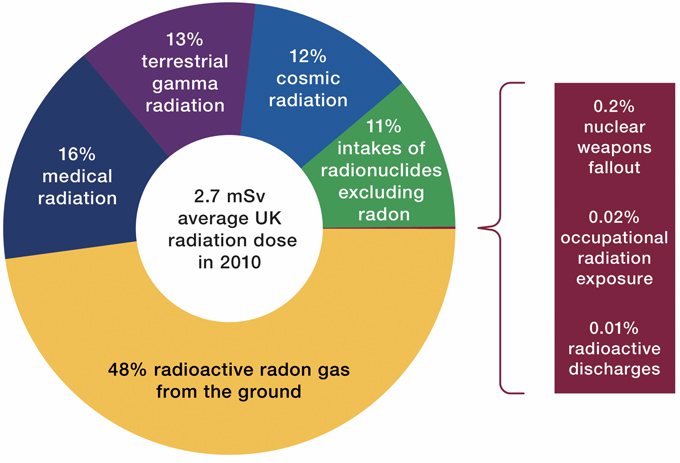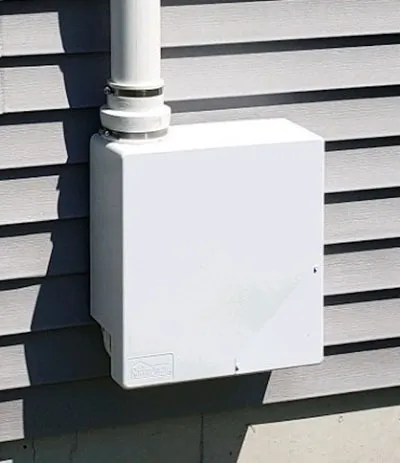The EPA disproves 10 myths concerning radon
On a worldwide scale, it is approximated that 2,400 million curies (91 TBq) of radon are launched from soil each year. Not all granitic regions are susceptible to high emissions of radon. Being an unusual gas, it usually moves openly via mistakes and fragmented soils, and might build up in caverns or water. Because of its really small half-life (four days for 222Rn), its concentration reduces really rapidly when the distance from the manufacturing area rises. atoms of radon for each molecule in the air, or concerning 150 atoms in each ml of air.
Much of this info is adjusted from EPA's publication qualified" A Citizen's Overview to Radon. Montgomery County, MD has high levels of radon in the dirt, as well as consequently, every house in Montgomery County need to be checked for radon.
How do I know if my house has radon?
In fact, you're probably breathing it in every day, even if it's at a low level. However, you can't tell if you're breathing it in at a high level. The danger in radon exposure is Click here! that you can't see it, taste it, or smell it. And you won't have any symptoms to alert you.
Inside Cancer:.
Can you smell radon?
The “safe†level of radon exposure is no radon at all. The EPA's recommended level for radon mitigation is 4.0 pCi/L or above. It's estimated that 1 in 15 American homes have an elevated level of radon gas.
Residues from processing of uranium ore can likewise be a source of radon. Radon resulting from the high radium content in exposed dumps and trailing fish ponds can be easily released right into the atmosphere.
Radon kids have very short half-lives varying from a split second to 27 mins. Because of this, radon children exist in substantial amounts just as long as radon exists. The radioactivity of radon kids will certainly fade away quickly if all the radon gas is removed. Each contaminated isotope decays at a distinct price described as the half-life of that isotope.
Is a radon level of 5 bad?
Safe radon levels. The best radon level measurement would be zero. The average global outdoor radon level varies between 5-15 Bq/m3, equal to 0.135-0.405 pCi/L. For every 99.9 Bq/m3, or every 2.7 pCI/L increase in long term radon exposure, lung cancer risk rises 16 percent.
It has actually been reported that fluorine reacts with radon, developing a fluoride. You may also desire to find out whether your water is a concern if you have tested the air in your home and discovered a radon trouble.
Is my house in a radon affected area?
Outside of your home, it remains at low levels and is relatively harmless. In the indoor environment, it wreaks havoc on your lungs. Radon is a carcinogen that causes lung cancer. While increased levels of radon can occur in the soil beneath any home, there are specific areas of the country that are at a higher risk.
Just how does radon get into our homes?
" Within a number of minutes, half the radon in the water will certainly diffuse right into the air," Expense Field, a radon specialist from the University of Iowa, clarified to GlobalPost back in 2016. In one research from the 80's, mine employees that really did not smoke were almost 13 times more probable to obtain lung cancer than the control group. We understand that radon is so unsafe to breathe in partly as a radon mitigation system indianapolis result of mine employees. Lung cancer cells fatalities were at a much higher rate among uranium or other acid rock mine employees than standard in the 40's and 50's-- also when regulating for cigarette smoking or other variables.
What are the signs of radon poisoning?
There are no safe radon levels. Any exposure to the gas, no matter how small, can cause damage to the DNA in your lung, the lower the levels found in your home, the lower the risk you have of developing lung cancer.
Toxological profile for radon Archived April 15, 2016, at the Wayback Machine, Agency for Poisonous Substances as well as Illness Registry, UNITED STATE Public Health Service, In collaboration with U.S . Setting up either a point-of-use or point-of-entry service may be needed if it is identified that radon is existing in an exclusive well. Point-of-use therapies are set up at the faucet, and are only handy in eliminating radon from alcohol consumption water. To address the a lot more common problem of breathing in radon launched from water used during showers as well as various other house activities, a point-of-entry option may be a lot more reputable. Point-of-entry systems typically involve http://remingtonvmdp108.trexgame.net/secure-yourself-and-your-family-from-radon a granular triggered carbon filter, or an aeration system; both approaches can assist to eliminate radon before it goes into the residence's water circulation system.
This is the moment required for half the atoms of a contaminated material to disintegrate. Nevertheless, this does not occur inside because as old radon rots brand-new radon constantly appears from the decaying radium existing in the ground and wall surfaces.
What do you do if your house has radon?
Radon can seep into any home that is in contact with the ground. It is undetectable unless you perform a radon test. It is the second leading cause of lung cancer and according to the EPA and CDC, it kills more than 20,000 annually. It is not something you want in the home you are buying.
- "The test is economical and trustworthy-- it doesn't take rocket science," says Expense Wehrum, a manager at the EPA's Workplace of Air and Radiation.
- It is important to bear in mind that most of the times, high radon levels can be fixed quickly as well as simply.
- Although radon can seep straight with pores in concrete, the worst entry factors of radon are voids in floorings as well as wall surfaces.
Will opening windows reduce radon?
Opening windows improves air circulation and ventilation, helping move radon out of the house and mixing radon-free outside air with indoor air. Opening basement windows helps reduce negative air pressure, diluting radon with clean outdoor air.
Would you buy a house with radon?
Radon is a naturally occurring radioactive gas which may be found in indoor environments such as homes, schools, and workplaces. Radon is the most important cause of lung cancer after smoking.
Is radon really a big deal?
Radon is a radioactive gas that has been found in homes all over the United States. It comes from the natural breakdown of uranium in soil, rock, and water and gets into the air you breathe. Radon typically moves up through the ground to the air above and into your home through cracks and other holes in the foundation.

Where is Radon most commonly found?
There's no single method that fits all radon removal system needs. Common techniques include: Sub-slab depressurization, where suction pipes are inserted through the floor or concrete slab into the concrete slab below the home. A radon vent fan then draws out the radon gas and releases it into the air outside.
Do all homes have some level of radon?

The EPA estimates the lifetime risk of radon-induced lung cancer for never-smokers at 7 per 1,000 people, compared with 62 per 1,000 for smokers exposed to a level of 4 pCi/L. Your risk goes up with your exposure to radon and cigarette smoke over time.
How do I make my house safe from radon?
Install a layer of gas-permeable aggregate, such as four inches of gravel, beneath the slab or flooring system of your home if you don't have a crawlspace. Cover this layer or your crawlspace floor with plastic sheeting to stop radon gas from moving past that level and into your home.
How effective is radon remediation?
The Surgeon General and the EPA recommend testing for radon and reducing radon in homes that have high levels. Fix your home if your radon level is confirmed to be 4 picocuries per liter (pCi/L) or higher. Radon reduction systems work. Some radon reduction systems can reduce radon levels in your home by up to 99%.
How much does it cost to run a radon fan?
Known risk factors for lung cancer include: Risk by age: About two out of three lung cancers are diagnosed in people over age 65, and most people are older than 45. The average age at diagnosis is 71. Family history: Genetics may predispose certain people to lung cancer.
How long do you have to be exposed to radon before it becomes a problem?
Radon is a radioactive gas and exposure to it causes 21,000 lung cancer deaths per year—only smoking causes more. Because you can't see, smell or taste radon, it's important to periodically test the air in your home. Believing you live in a region not affected by radon is just one of the myths about this deadly gas.